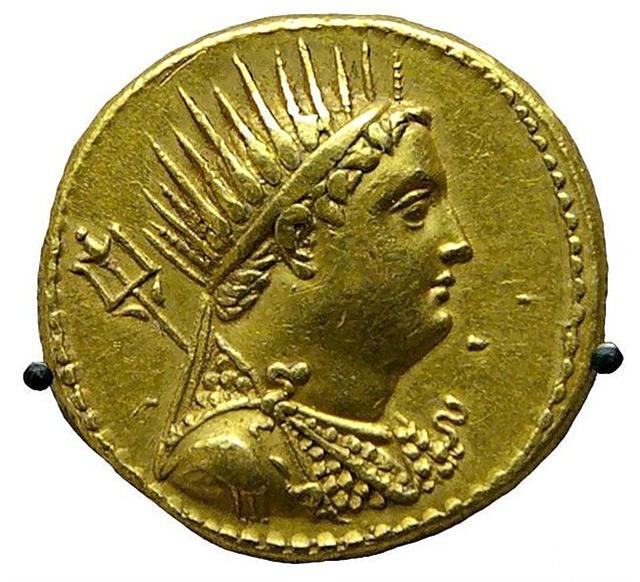|
2. Diadem, α Coma Berenicis, is rising heliacally in October 7 - 7 months beyond the 'Bucket Rope' - and possibly marks where 'the Earth Turtle' is culminating at midnight (136 nights beyond Gb8-30):
Wikipedia: "Berenice II (267 or 266 BC – 221 BC) was the daughter of Magas of Cyrene and Queen Apama II, and the wife of Ptolemy III Euergetes, the third ruler of the Ptolemaic dynasty of Egypt. In about 249 BC, she was married to Demetrius the Fair, a Macedonian prince, soon after her father [had] died. However after coming to Cyrene he became the lover of her mother Apama. In a dramatic event, she had him killed in Apama's bedroom, but Apama lived on afterwards. She had no children with Demetrius. Afterwards she married Ptolemy III." It is hardly a coincidence that the mother of Berenice was Apama. The star Apami-Atsa (θ Virginis) is rising only hours before Diadem. The lover of Apama, Demetrius the Fair, was killed in her 'bedroom' - perhaps he played the role of Kuukuu. Demeter was the goddess of earth. "In ancient Greek religion and myth, Demeter ... is the goddess of the harvest, who presided over grains and the fertility of the earth. Her cult titles include Sito (σίτος: wheat) as the giver of food or corn/grain and Thesmophoros (θεσμός, thesmos: divine order, unwritten law) as a mark of the civilized existence of agricultural society. Though Demeter is often described simply as the goddess of the harvest, she presided also over the sanctity of marriage, the sacred law, and the cycle of life and death. She and her daughter Persephone were the central figures of the Eleusinian Mysteries that predated the Olympian pantheon. In the Linear B Mycenean Greek tablets of circa 1400-1200 BC found at Pylos, the 'two mistresses and the king' are identified with Demeter, Persephone and Poseidon. Her Roman equivalent is Ceres." (Wikipedia) Poseidon was the god of the sea. Perhaps he can be identified with Minelauva (δ Virginis) because this star was named Āpa. The 'Waters' should refer to the back side of the year, where Gazelle / Goat / Stag rules: ... The medieval names Auva, Al Awwa, and Minelauva are from the Arabic, meaning 'barking (dog)'. This star, along with β Vir (Zavijava), γ Vir (Porrima), η Vir (Zaniah) and ε Vir (Vindemiatrix), were Al Awwā, the Barker ... On Euphrates it was Lu Lim, the Gazelle, Goat, or Stag, - or perhaps King; and, with ε, probably Mas-tab-ba, another of the seven pairs of Twin-stars of that country. The Hindus called it Āpa, or Āpas, the Waters; and the Chinese, Tsze Seang, the Second Minister of State ...
The Turtle (honu) glyphs are, it seems, related to the 'sea', personified by Poseidon. His weapon was the trident which might explain the use of the letter ψ for the star rising half a day earlier than Āpa. Day 276 has 3 'teeth' (tri dents) - a day of Venus, 3 * 92. In this gold coin issued by Ptolemy IV is a picture of his father Ptolemy III Euergetes ('Benefactor') and we can see a kind of trident at the back side of his head:
We should add β and γ to our star lists:
|
|||||||||||||||||||||||||||||||||||||||||||||||||||||||||||||||||||||||||||||||||||||||||||||||||||||||||||||||||||||||||||||||||||||||||||||||||||||||||||||||||||||||||||||||||||||||||||||||||||||||||||||||||||||||||||||||||||||||||||||||||||||||||||||||||||||||||||||||||||||||||||||||||||||||||||||||||||||||||||||||||||||||||||||||||||||||||




